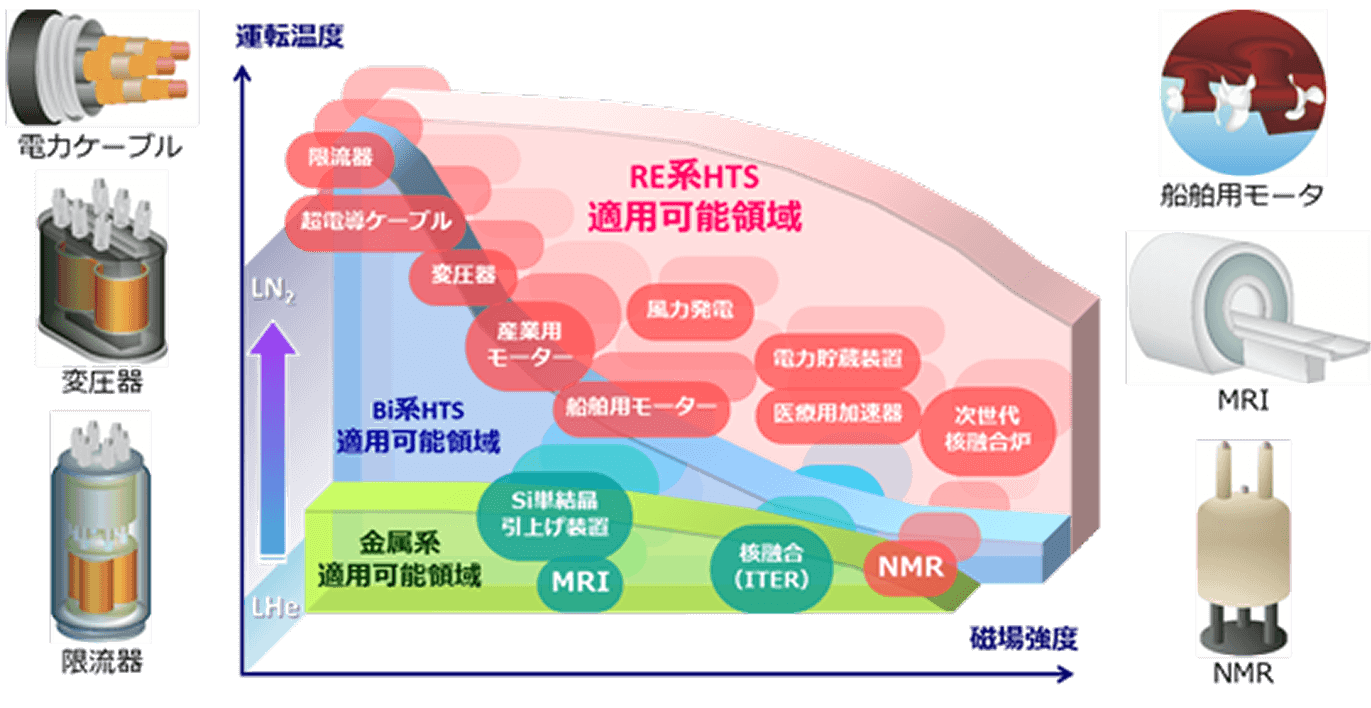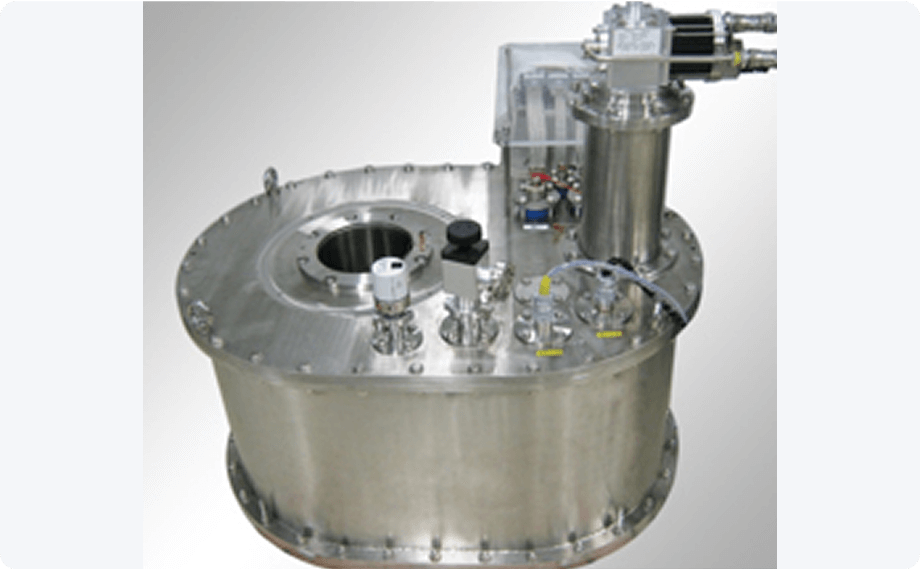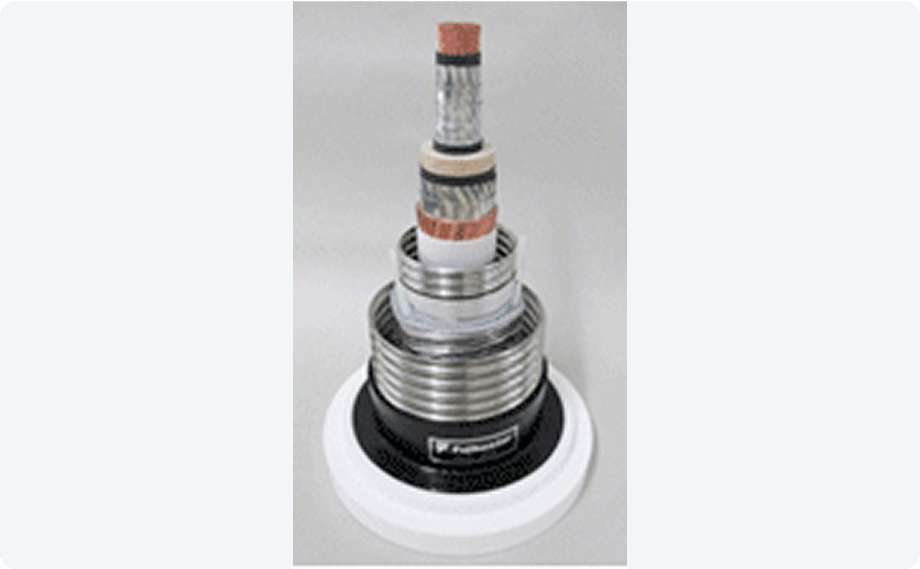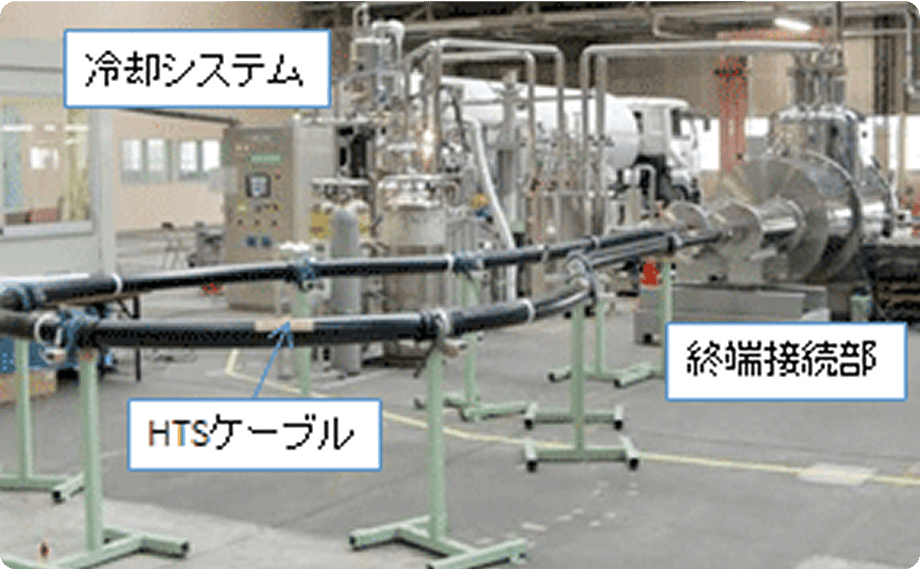- HOME
- Products
- Superconductivity
- Superconducting Solutions
Superconducting Solutions
- Why choose Fujikura?
- Superconducting Solutions
- History of Fujikura's superconducting wire development
Structure of the amplifying fiber for fiber laser
The phenomenon in which the electrical resistance of a material becomes zero below a certain low temperature is called "superconductivity." Normally, when an electric current is passed through a metal, the presence of electrical resistance causes heat generation and energy loss. Superconductors have no electrical resistance, so large currents can pass through them without energy loss.
Fujikura is taking advantage of these characteristics to develop a variety of products.

Properties of superconductivity
Structure of the amplifying fiber for fiber laser
- Superconductivity is not a phenomenon that occurs simply by cooling; there are three critical points of electric current, temperature, and magnetic field that indicate the superconducting state.

- Critical current: The upper limit of the current that can flow in a superconducting state
- Critical temperature: The upper limit of the temperature at which the material exhibits a superconducting state
- Critical magnetic field: The upper limit of the magnetic field at which the superconducting state is not destroyed
Superconducting Device Applications

| Low-temperature superconductivity (metallic) |
|
|---|---|
| High-temperature superconductivity (copper oxide system) |
|
Superconducting Magnet

Fujikura has been working on its own coil technology for some time, and in 2012 developed a 5T yttrium-based high-temperature superconducting magnet, one of the world's largest, with a room-temperature bore of φ20 cm.
- Length of wire used:
- 7200m (300m x 24 layers)
- Number of turns:
- 5775 turns
- Operating current:
- 333A@25K
- Central magnetic field:
- 5.0T (50,000 gauss)
- Stored Energy:
- 426kJ
Superconducting Cable


Fujikura is also developing superconducting cables, and in 2013 succeeded in demonstrating that by application superconducting wire with a high critical current, it was possible to reduce AC losses to one-quarter compared to conventional power cables.
- 66kV-5kA class single-core cable system (10m)
- Wire performance: Ic > 240 A/4mm-wide @77K, Self-field
- Target AC loss < 2 W/m @5kA
- Measured AC loss: 1.4W/m@77K, 0.95W/m@67K
Part of this research was carried out under a contract with the New Energy and Industrial Technology Development Organization (NEDO).
Site Search
- HOME
- Products
- Superconductivity
- Superconducting Solutions

